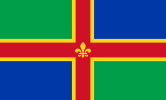
An abbey is a type of monastery used by members of a religious order under the governance of an abbot or abbess. Abbeys provide a complex of buildings and land for religious activities, work, and housing of Christian monks and nuns.
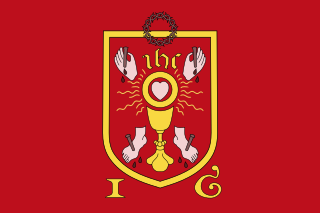
The Pilgrimage of Grace was a popular revolt beginning in Yorkshire in October 1536, before spreading to other parts of Northern England including Cumberland, Northumberland, Durham and north Lancashire, under the leadership of Robert Aske. The "most serious of all Tudor period rebellions", it was a protest against Henry VIII's break with the Catholic Church, the dissolution of the lesser monasteries, and the policies of the King's chief minister, Thomas Cromwell, as well as other specific political, social, and economic grievances.

The Order of Canons Regular of Prémontré, also known as the Premonstratensians, the Norbertines and, in Britain and Ireland, as the White Canons, is a religious order of canons regular of the Catholic Church founded in Prémontré near Laon in 1120 by Norbert of Xanten, who later became Archbishop of Magdeburg. Premonstratensians are designated by OPraem following their name.

Barlings and Low Barlings are two small hamlets lying south off the A158 road at Langworth, about 7 miles (11 km) east of Lincoln in the West Lindsey district of Lincolnshire, England. Low Barlings is a scattered collection of homes, situated along a trackway south from Barlings towards boggy ground near the River Witham. Both hamlets are in the civil parish of Barlings. The population of the civil parish at the 2011 census was 460.

Bourne Abbey and the Parish Church of St. Peter and St. Paul is a scheduled Grade I church in Bourne, Lincolnshire, England. The building remains in parochial use, despite the 16th-century Dissolution, as the nave was used by the parish, probably from the time of the foundation of the abbey in 1138.

Beeleigh Abbey near Maldon in Essex, England, was a monastery constructed in 1180 for the Order of Canons Regular of Prémontré, as known as the Norbertines or Premonstratensians. The order linked the change of the separate life of monks in the 12th century with the retrospective life of the friar, who was considerably more active.
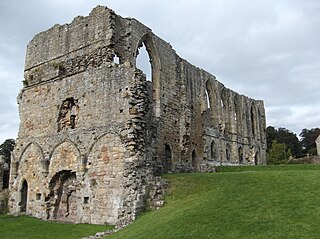
Easby Abbey, or the Abbey of St Agatha, is a ruined Premonstratensian abbey on the eastern bank of the River Swale on the outskirts of Richmond in the Richmondshire district of North Yorkshire, England. The site is privately owned but maintained by English Heritage and can be reached by a riverside walk from Richmond Castle. Within the precinct is the still-active parish church, displaying 13th-century wall paintings.

Revesby Abbey was a Cistercian monastery near the village of Revesby in Lincolnshire, England. The abbey was founded in 1143 by William de Roumare, Earl of Lincoln, and the first monks came from Rievaulx Abbey.

Missenden Abbey is a former Arrouasian (Augustinian) monastery, founded in 1133 in Great Missenden, Buckinghamshire, United Kingdom. The abbey was dissolved in 1538, and the abbey church demolished. In 1574 a house, also known as Missenden Abbey, was constructed on the site of the monastic cloisters, incorporating some of the monastic remains. The house was altered several times, gaining its current "Regency Gothic" style at the beginning of the 19th century. The house was "gutted" by fire in 1985 and subsequently rebuilt.
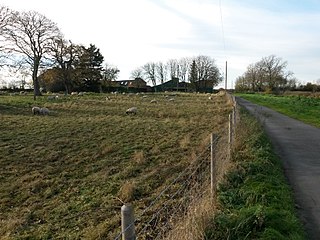
Broadholme Priory was a convent of canonesses of the Premonstratensian Order located near to the village of Broadholme. Historically in Nottinghamshire, since boundary changes in 1989, the priory and village has been in Lincolnshire.
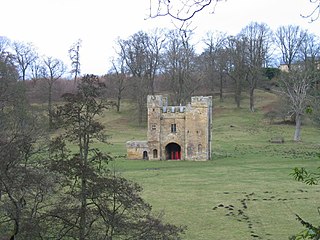
Alnwick Abbey was founded as a Premonstratensian monastery in 1147 by Eustace fitz John near Alnwick, England, as a daughter house of Newhouse Abbey in Lincolnshire. It was dissolved in 1535, refounded in 1536 and finally suppressed in 1539. The Alnwick Abbey site is located just within Hulne Park, on the bank of the River Aln. The only visible remnant is the impressive 14th-century gatehouse, a Grade I listed building.

Barlings Abbey was a one of nine Premonstratensian monasteries in the county of Lincolnshire, England. It was founded in 1154, as a daughter house of the Abbey of St. Mary and St. Martial in Newsham.

Croxton Abbey, near Croxton Kerrial, Leicestershire, was a Premonstratensian monastery founded by William I, Count of Boulogne.

Tupholme Abbey was a Premonstratensian abbey close to the River Witham some 10.5 miles (16.9 km) east of the city of Lincoln, England and one of nine such abbeys within the historical county. The Witham valley in Lincolnshire is notable for its high concentration of monasteries—there were six on the east bank and three on the west—all presumably drawn to the area by the usefulness of the River Witham for transport and by the wealth that it transported. The abbey was largely destroyed by 1538, after being seized during Henry VIII's Dissolution of the Monasteries.

Owston Abbey was an Augustinian monastery in Owston, Leicestershire, England.
Hagnaby Abbey was an abbey and former priory in Hagnaby, Lincolnshire, England. It was one of nine Premonstratensian houses within the historical county.
Newbo Abbey was a Premonstratensian house of canons regular in Lincolnshire, England, and was dedicated to the Assumption of Mary.
Sulby Abbey was a Premonstratensian house in Northamptonshire, England, founded in 1155 as daughter house of the Abbey of St. Mary and St. Martial in Newsham.
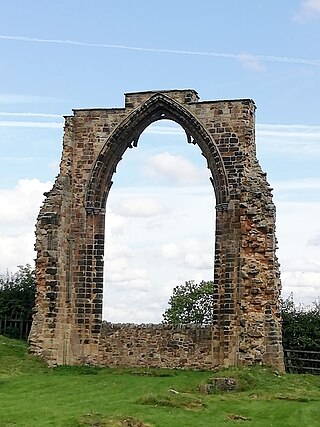
Dale Abbey, also known as the Abbey of Stanley Park, was a religious house, close to Ilkeston in Derbyshire. Its ruins are located at the village of Dale Abbey, which is named after it. Its foundation legend portrays it as developing from a hermitage, probably in the early 12th century.



















